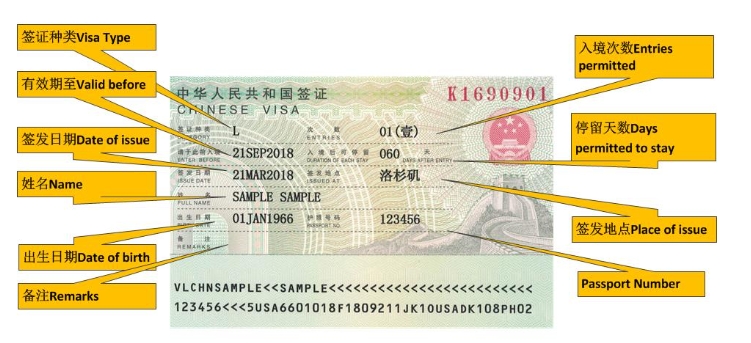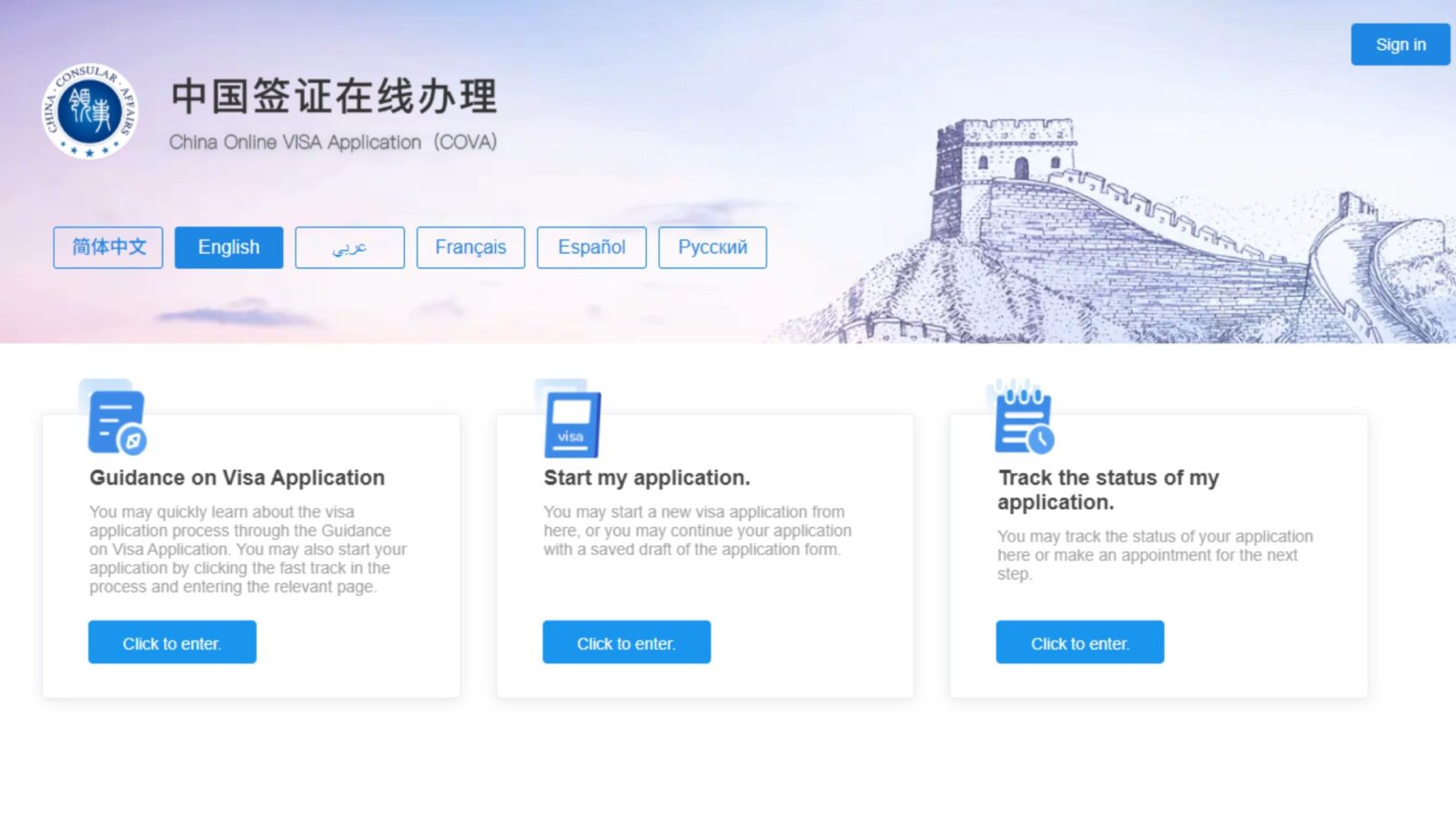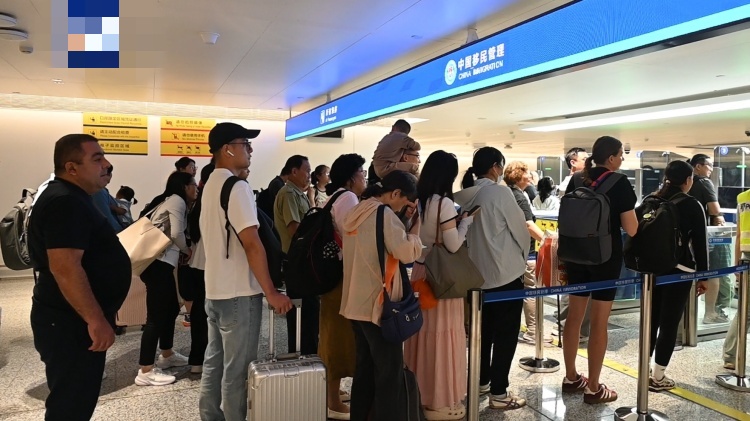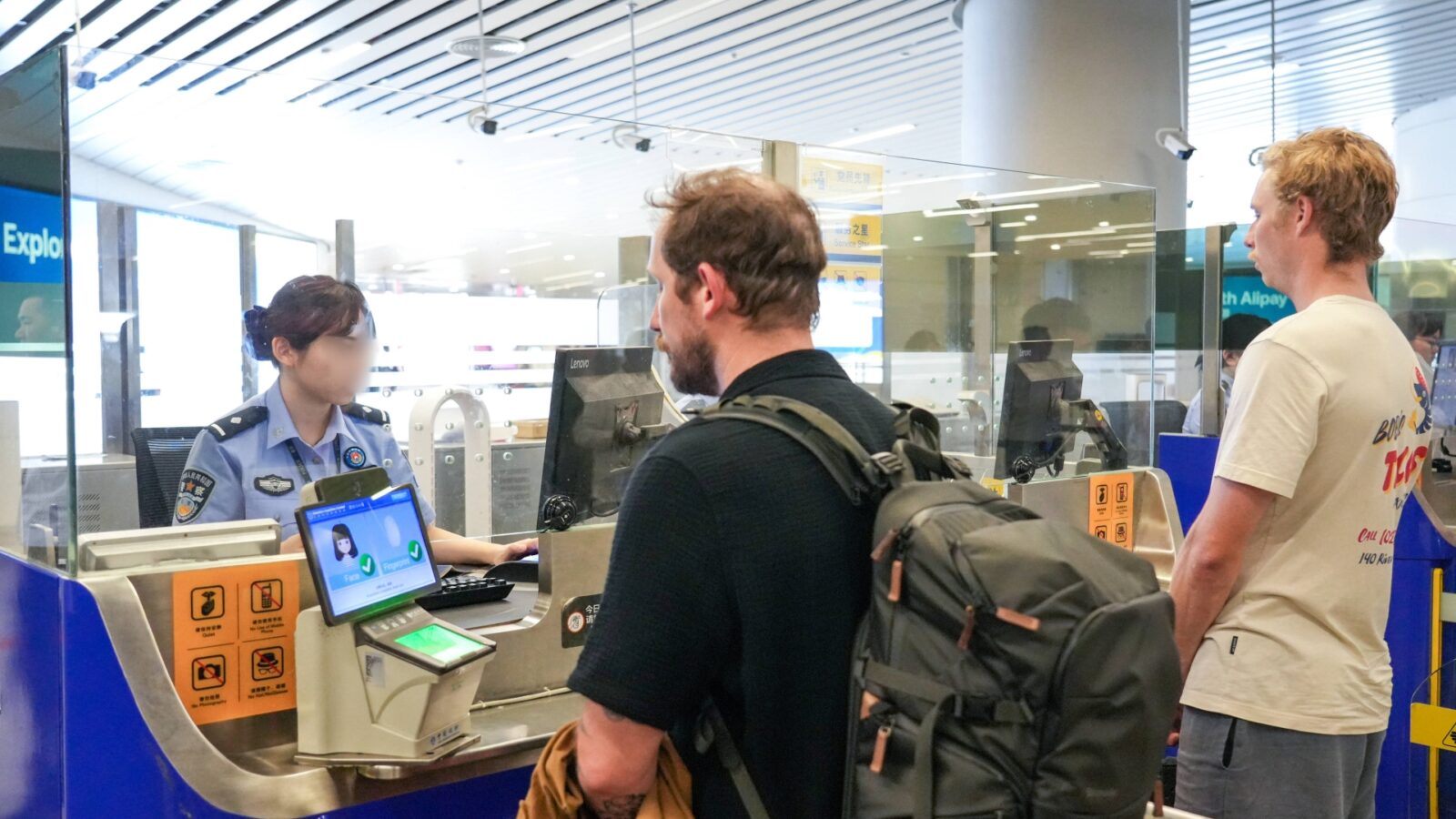Tourists at a Chinese Visa Application Center the world over look blankly at the form in their hands and wonder whether they should be applying for an L or an M visa. At the same time, they curse a system that exists solely to confound and vex (COVA). If you are one of these tortured souls, then this post is for you: a simple guide to types of Chinese visa.
Chinese visa application forms use a system of “clear purposes” each based on a letter: L (tourism), M (business), Z (work), X (study), Q/S (family) or these options down in the minor keys as well like J or C for certain jobs. This one-of-a-kind guide takes official jargon and turns it into real practical help from actual applicants: explanations on what visa suits your travel intention, comparisons of consulate processing times in leading countries (U.S., U.K., Singapore…), details about 2025 updates to visa-free and visa on arrival policies, precise guidelines for each step in filling out an COVA application.
This isn’t a rule book–it is a scalpel designed to prevent errors and lost time. Whether it’s travelling together with a family, sightseeing trip, business meetings or temporary work assignments – the only thing we have to do is find out the right China visa for you and then make passport visas as simple and easy as possible.
Still Confused About Chinese Visa Types? Let’s Make It Simple

L Visa
Quick Info of the Chinese Visa Types:
| Visa Type | Who It's For | Stay Duration | Main Document | Difficulty | Recommended ★ Rating |
|---|---|---|---|---|---|
| L | Tourist | 30 days | Hotel + ticket | Easy | ★★★★★ |
| M | Business | 30–90 days | Company letter | Moderate | ★★★★ |
| Z | Work | Long-term | Work permit | Hard | ★★★★ |
| X1/X2 | Student | 180+ / <180 days | Admission letter | Medium | ★★★★ |
| Q/S | Family | 90–180 days | Relationship proof | Moderate | ★★★★ |
| J/C/D/G | Special Purpose | Varies | Official letters | Professional | ★★ |
L Visa (Tourist) — ★★★★★ Easy and Universal
If the Great Wall or dumplings in Chengdu are haunting your dreams, you’ll want to get an L Visa. It’s the simplest fare available among every Chinese visa type, exclusively designed for sightseeing and recreation. You don’t need family connections, business associations or fancy documents — just your passport, a half-decent photo and flight reservations and hotel bookings to show you have some sort of life waiting at home.
It is for 30 days that most people get, although some correspondents are lucky and have been given many entries when they travel frequently. The embassy is primarily confirming that your travel plan is reasonable, so don’t overthink it. One way to think about this visa is as China’s “open gate for wanderers.” It’s low-stress, cheap and easy for a first-timer who just wants to get out and go without signing off on a lot of red tape.
M Visa (Business) — ★★★★ Formal but Rewarding
Now, if you are heading on a business trip, for negotiations or for fairs, the M Visa is right up your alley. These are the visa sort for people that are visiting trade expositions or factories and hopping from one to another – a mongrel among Chinese visa types. You will need an official invitation letter, ideally stamped in red — yes, it is possible they’ll call your host company to verify it’s legitimate.
Anticipate stays of 30 to 90 days. When it comes to your invitation and purpose, not what you wore, embassies tend to break a sweat, so keep those documents clean and consistent. You can fill sightseeing in during free time, but just remember — it’s still a business visa to begin with. For entrepreneurs and deal-makers, it’s the guide to China’s frenetic commercial world.
Z Visa (Work) — ★★★★ Challenging but Worth It
The Z Visa is when shit gets real—it’s your means of long-term living and working in the country. It’s one of the less comical Chinese visas, one designed for foreign professionals, performers or teachers. Your employer does the hard work by arranging your Work Permit Notification before you even apply.
Once you’re in, there will be medical exams, paperwork and the need to turn that visa into a residence permit within 30 days. It’s a patience-testing aspect of making fixed-hyperlink positions, but it provides stability. View every stamp and document you will have to obtain as footsteps toward your new chapter in China. Yes, it’s paper-dense, but it is also the visa that transforms postcards into paychecks.
X1/X2 Visa (Student) — ★★★★ Educational and Flexible
If you’re classroom- and not boardroom-bound with your plans, you're staring down the X1 or X2 Visa. These Chinese visa categories directed toward students are very student-friendly and give beginner to intermediate level language learners and exchange students an foot in. X1 is for full semesters (longer than 180 days), and X2 deals with shorter programs. Your school will send an acceptance letter, plus a JW201 or JW202 form – and that’s your golden ticket.
When you arrive, there will be a medical exam and registration at the university in your area. It’s a little bureaucratic, but smooth if your school is legit. The joke among students is that the hardest part isn’t actually getting the visa, it’s waking up for 8 a.m. Mandarin class. Yet it’s a great route for those who wish to study and live as if they were locals.
Q1/Q2 & S1/S2 Visa (Family and Dependents) — ★★★★ Heartfelt but Strict
The Q and S Visas are emotional roller-coasters surrounded in red tape. They are for family visits and reunions, not casual tourism. These are the Chinese visa types that involve trust and ties, among all other. Q1 and Q2 cover families of Chinese citizens, while S1 and S2 target foreigners working or studying in China who wish to have their loved ones with them.
They will need proofs of relationship — birth certificates, marriage licenses, possibly even family photos. Officers verify these, so honesty is important. The former (Q1/S1) can be up to or more than 180 days, whereas Q2/S2 are shorter. O.K., you can sightsee some, but remember: this is a family visit. The tales behind those visas usually begin with a hug at the airport.
J1/J2, C, D, G (Special Purpose) — ★★ Rare and Professional
Just those are the niche ones — the serious side of Chinese visa types. J1/J2 visas are for journalists; C visas, airline crew members; D permanent residents; G quick transit travelers. You will need official letters, contracts or tickets to be eligible. They’re slower because different government departments take care of them.
If you’re not piloting a plane, reporting the news or moving for good, then these likely aren’t for you. But there’s a reason they exist — to grease the wheels of China’s professional, diplomatic and travel sectors. When most of us pass by the Michigans, they’re just curious footnotes — but for a few, they’re the show.
How Fast Can You Get a Chinese Visa? Find Out Now
After you’ve figured out which visa suits you best, the next question is: how long will it take, and how tricky is it? Based on real experiences from travelers in the U.S., U.K., Australia, Singapore, Malaysia, India, and the Philippines, here’s a practical overview of how the Chinese visa process compares across countries.
| Country | Average Processing Time (Working Days) | Fast-Track Option | Difficulty (1–5 Stars) | Key Review Focus |
|---|---|---|---|---|
| United States | 4–5 | Yes (2–3 days; requires valid reason and extra fee) | ⭐⭐⭐ | Basic documents and fingerprints; clear travel purpose required |
| United Kingdom | 4–6 | Yes (Express: 3 days; Rush: 2 days, paid) | ⭐⭐⭐⭐ | Detailed itinerary, confirmed hotels, flights, sometimes proof of funds |
| Australia | 5 | Limited (emergency only, needs proof like hospital or business letter) | ⭐⭐⭐ | Online system strict on ID verification and travel history |
| Singapore | 3 | Yes (1–2 days; no reason needed) | ⭐⭐ | Simple documents; strong approval rate (95%+), high efficiency |
| Malaysia | 3–4 | Yes (2-day express, 1-day rush, paid) | ⭐⭐ | Easy process; short trips often visa-free; minimal paperwork |
| India | 6–8 | No official fast-track | ⭐⭐⭐⭐ | Requires employment proof, company registration, occasional interview |
| Philippines | 7–9 | No (agencies may reduce to ~5 days for extra fee) | ⭐⭐⭐⭐ | Bank statement, return ticket, sometimes family proof for applicants |
Quick Takeaway
Singapore and Malaysia lead in speed and simplicity, making them ideal for short-notice travelers. The U.S. and Australia stay consistent and structured, while the U.K. demands precision. India and the Philippines take longer due to stricter document verification but remain achievable with preparation. For smooth sailing, prepare all supporting documents early and double-check embassy updates before applying.
Need to know how long China’s visa really takes? How Long Does It Take to Get a China Visa? Real Timelines and Tips You Can Trust (2025) breaks it down clearly.
Ready to Apply? Follow This Simplified COVA Guide for Chinese Visa Types

COVA Interface
Step 1: Prepare Essentials
Gather the basics first — a valid passport (6+ months), a recent photo (48×33mm), and travel or invitation details. Always use a desktop computer for fewer technical issues.
Step 2: Access and Fill Out the Form
Go to COVA (China Online Visa Application) official website and pick your country’s embassy.Fill in your personal data, travel plan, and visa type (L for tourism, M for business, etc.). Double-check everything before moving on.
Step 3: Upload and Review
Upload your passport page, photo, and supporting files under 2MB each. Review the form carefully and confirm all information before submitting.
Step 4: Print and Submit
Print the Confirmation and Signature Pages, sign them by hand, and take them to your visa center with your passport and photo. Most travelers will give fingerprints during submission.
Step 5: Wait for Processing
Processing usually takes 4–7 business days, with express options available in some countries. You can track your progress on the COVA website using your application number.
Pro Tips
- Take screenshots to save your data.
- Sign the printed form right away.
- Keep updated via your local Chinese embassy website.
That’s it — a simple, efficient way to complete your Chinese visa application using the COVA system.
China Visa-Free Entry Categories by Stay Duration (2025 Update)

China officially grants visa-free entry to Azerbaijani passport holders
90-Day Visa-Free Countries — Ideal for Long Trips
If you’re planning a deeper journey across China, the 90-day visa-free list is a dream. Citizens from Serbia, Bosnia and Herzegovina, Albania, and Montenegro can visit freely for up to 90 days under bilateral agreements. Russia now joins this list with a one-year special policy from September 2025, open to both individual and group tourists.
Holders of valid Schengen visas or residence permits from countries like France, Germany, Italy, and Spain can also enter through specific checkpoints. The long stay is perfect for those combining business and extended travel. Just make sure you carry your documents, as border officers may ask to verify them.
30-Day Visa-Free Countries — Perfect for a Quick Getaway
If you want flexibility without paperwork, the 30-day visa-free policy fits well. It covers travelers from the UAE, Qatar, Armenia, Brunei, Kazakhstan, and Uzbekistan, offering quick entry and minimal queues. Visitors from Thailand and Singapore also benefit from temporary 30-day access throughout 2025.
Many travelers say Chinese immigration at major airports like Shenzhen or Shanghai is faster than expected, often taking under five minutes. These 30-day stays make short-term travel easy for those who prefer smooth arrivals and quick city adventures without the stress of visa forms.
🏖️ France, Sweden… and maybe you! Get the full 2026 visa-free list in China Visa-Free Countries 2026 Update — Policy Extended to France, Sweden and 43 Others for 30-Day Stays.
15-Day Visa-Free Countries — Great for Regional Travelers
For quick visits or regional tours, the 15-day visa-free policy is the most convenient. It applies to South Korea (Jeju Island only), Japan (organized group tours), Vietnam, Malaysia, and Indonesia. These travelers can explore key Chinese cities for two weeks without paperwork. The policy focuses on regional exchange and short cultural experiences rather than long vacations.
However, routes and entry points are specific—like Jeju-to-China flights or land entries through Friendship Pass. Always check your embassy’s latest updates before departure, as some of these programs are seasonal or under ongoing review.
Transit Visa Exemptions and How They Fit into Chinese Visa Types (72/144/240-Hour Policies)
What’s New in 2025
If you’re exploring Chinese visa types, the transit visa-free policy is one to remember. From June 12, 2025, travelers from 55 countries, including Indonesia, can stay in China for up to 240 hours (10 days) without a visa. This new policy expands on the 72-hour and 144-hour versions, now covering 60 ports in 24 provinces like Beijing, Shanghai, and Guangzhou. It’s the perfect option for short-term travelers who want to turn a stopover into a mini China trip without paperwork.
How It Works
Compared with regular Chinese visa types such as L (tourist) or M (business), the transit policy is simpler. Travelers must fly country → China → another country, like “London → Shanghai → Tokyo.” You’ll need a valid passport and a confirmed onward ticket. The 240-hour stay allows travel within specific regions such as the Yangtze River Delta and Greater Bay Area, making it easy to explore while waiting for your next flight.
Traveler Tips
Register within 24 hours of arrival via your hotel or the China Immigration app. Keep printed copies of your flight itinerary and hotel booking for inspection. Avoid overstaying your 240 hours to prevent fines or entry issues. For accurate info, check the National Immigration Administration site or call +86-12367. Among all Chinese visa types, this one gives you the simplest way to enjoy China—fast, flexible, and stress-free.
Want to learn the key updates on China’s visa-free transit policy? China Transit Visa: From 144 Hours to 240 Hours (2025 Update): Policy, Ports, and Itineraries has all the details you need.
2025 China Visa Tips and Warnings
1. Get Your Documents Right
Start early and prepare everything carefully. For business or work visas, make sure your invitation letter includes the company’s registration or permit number. Use only digital invitations with QR codes that the embassy can verify online. When taking your visa photo, use a white background and show both ears clearly. Print it on matte photo paper. For family visas, translate birth or marriage certificates into English and attach a certified translator’s statement. These steps reduce errors and keep your application smooth from the start.
2. Watch for Policy Windows
Stay updated with new visa-free policies. Russia’s 90-day visa-free plan runs from September 2025 to August 2026, perfect for long trips. Thailand and Singapore travelers can enjoy 30 days visa-free through all of 2025. During major Chinese holidays like Lunar New Year and National Day, expect longer border lines and slower entry. Keep digital copies of your travel and ID documents handy for quick verification at customs when traffic peaks.
3. Handle the COVA System Smartly
The online form on COVA can timeout after 30 minutes, so use “print preview” every 15 minutes to keep your progress. You can also book fingerprint appointments in advance using each city’s official WeChat mini-program to skip long queues. When paying visa fees, use your own credit card or bring authorization documents if someone else pays. Remember, cash is rarely accepted in 2025. Keeping your process digital helps speed everything up and prevents unnecessary delays.
4. After Approval: Arrive Prepared
Before flying, double-check your visa’s “enter before” date—it’s not the same as your allowed stay time. Long-term visa holders like Z, X1, Q1, and S1 must register their address within 24 hours after landing. You can do this through the “China Immigration” app to skip local police queues. Always save hotline numbers of the foreign affairs office and register your trip with your country’s embassy in China. It’s the best safety net in case your passport or visa gets lost.
FAQs — Chinese Visa Types and Applications
Q: What are the different types of visa for China?
China has 12 main visa categories, from L (tourist) and M (business) to Z (work) and X (student). The L visa suits most short-term travelers, while the Z and X visas require formal documentation like work permits or admission letters. You can check the full list on the National Immigration Administration website.
Q: What’s the difference between Q1 and Q2 visas for China?
Q1 is for long-term family reunions (over 180 days), while Q2 is for short-term visits (under 180 days). Both require proof of family relationship, but Q1 holders must convert their visa into a residence permit after arrival.
Q: Do US citizens need a visa for China?
Yes, except during transit exemptions or special visa-free policies. The process in the U.S. usually takes about 4–5 working days, and applicants can use the Chinese Visa Application Service Center in major cities like Washington D.C., Los Angeles, and Chicago.
Q: What’s the difference between S1 and S2 visas in China?
S1 is for relatives of foreigners who work or study in China for long-term stays (over 180 days), while S2 covers shorter visits. Both require an invitation letter and proof of kinship, such as a birth or marriage certificate.
Q: What documents do I need to apply for an L visa (tourist)?
A valid passport, return flight ticket, hotel booking, and a basic itinerary. Embassy officers may ask about your travel plans, so it’s best to show confirmations from Ctrip or Booking.com.
Q: Can I apply for a Chinese visa online?
Partially. You must fill out the COVA online application form and then submit printed documents in person at the visa center. Payment is also done on-site. Some agencies offer assistance, but the final approval always happens through the official process.
Q: Is there a difference between tourist and business visas in China?
Yes. The tourist (L) visa is for leisure travel, while the business (M) visa allows commercial activities like trade fairs and meetings. Don’t mix purposes on your form—officers can verify details through your inviter.
Q: Can I travel from Hong Kong or Macau to Mainland China without a visa?
Not always. Hong Kong and Macau have separate entry systems. If you hold a foreign passport, you’ll likely need a Mainland visa unless your country appears on the 144-hour visa-free transit list.
Q: How can I tell which visa fits my travel purpose?
Ask yourself: are you visiting, studying, or working? If it’s tourism, go with L. If you’re being paid in China, it’s Z. Family or dependent stays fall under Q or S. When unsure, check embassy Q&A pages or call your nearest visa center.
Q: Can I use the 144-hour visa-free transit for tourism?
Yes, but only if you hold a confirmed onward ticket to a third country. For example, Seoul → Beijing → Paris works. You can explore designated regions like Beijing-Tianjin-Hebei, Yangtze River Delta, or Greater Bay Area without a full visa.


